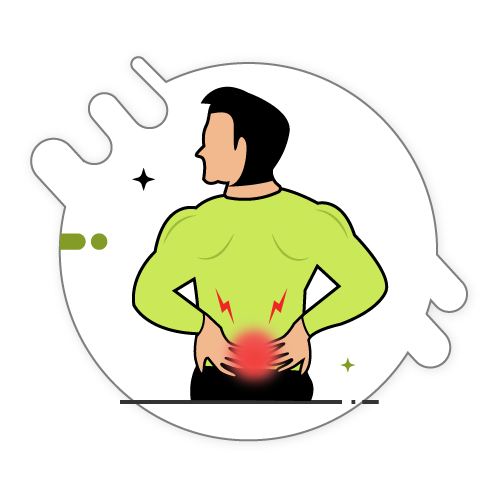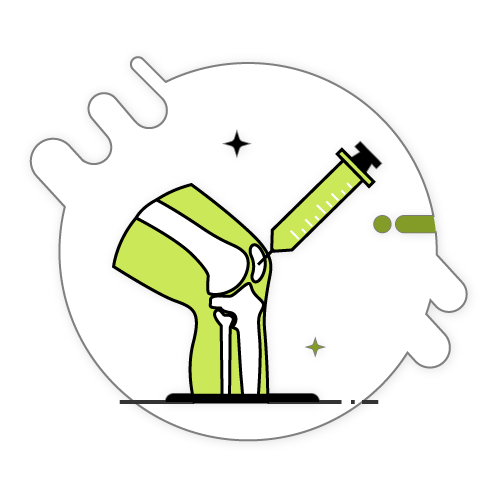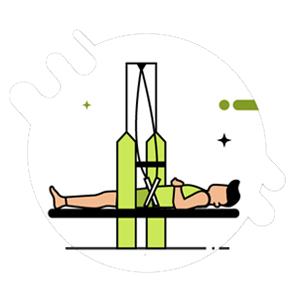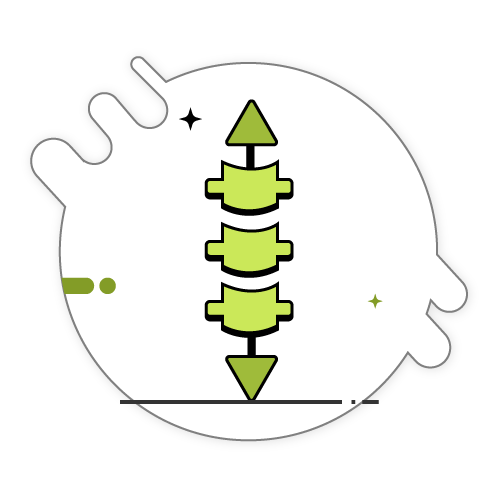Dry Needling
What is Dry Needling?
While the name of the procedure may sound intimidating, dry needling is safe, minimally discomforting and often an effective technique for patients with certain musculoskeletal presentations. Dry needling is a treatment performed by skilled, trained physical therapists, certified in the procedure. A thin monofilament needle penetrates the skin and treats underlying muscular trigger points for the management of neuromusculoskeletal pain and movement impairments.

Fun Fact
Dry needles don’t deliver an injection or medicine.
What kinds of pain does dry needling treat?
Dry needling is almost always used as a part of an overall plan that will likely include some type of exercise, manual therapy, heat therapy, and education. Dry needling is used to increase range of motion that may be limited due to muscle tightness or scar tissue. Dry needling may also treat:
 Joint problems
Joint problems Disk problems
Disk problems Tendinitis
Tendinitis Migraine and tension-type headaches
Migraine and tension-type headaches Jaw and mouth problems (such as temporomandibular joint disorders or TMD)
Jaw and mouth problems (such as temporomandibular joint disorders or TMD) Whiplash
Whiplash
 Repetitive motion disorders (like carpal tunnel syndrome)
Repetitive motion disorders (like carpal tunnel syndrome) Spinal problems
Spinal problems Pelvic pain
Pelvic pain Night cramps
Night cramps Phantom pain
Phantom pain Post-herpetic neuralgia (pain left behind by shingles)
Post-herpetic neuralgia (pain left behind by shingles)
Why Dry Needling?
When physical therapists use dry needling, it is typically part of a larger treatment plan.
Dry needling can release or inactivate trigger points to relieve pain or improve range of motion. Research suggests that dry needling improves pain control and reduces muscle tension. Study findings also show that dry needling can normalize dysfunctions of the motor end plates, from which nerve impulses get transmitted to muscles. This can help speed up the patient’s return to active rehab.
Is Dry Needling the Same as Acupuncture?
It’s important to note dry needling is not the same as acupuncture. It uses similar tools, but that’s where the similarities end. Dry needling is performed by different practitioners with different training. Acupuncture is based on Eastern medicine, while dry needling is rooted in Western medicine and evaluation of pain patterns, posture, movement impairments, function and orthopedic tests.
Dry needling treats muscle tissue, and its goal is to reduce pain, inactivate trigger points and restore function. It rarely is a standalone procedure. Rather, it often is part of a broader physical therapy approach incorporating other traditional physical therapy interventions into treatment.
Dry needling can be used for a wide variety of musculoskeletal issues, such as shoulder, neck, heel, hip and back pain.
See a Physical Therapist at Advanced Spine & Posture to see if dry needling would be part of your treatment plan
Contact Us Today!
Our comprehensive evaluation and custom treatment plans are designed to deliver results.
Don't wait. Schedule today!





